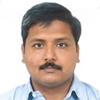Economy is facing the spectre of a spike in youth frustration as millions desperately look for employment
If the long queues at the employment exchanges and the crowds at private job fairs are an indicator, then trouble lies ahead for the Indian economy. The time has come to make employment generation the pivot for national development strategies.
The United Nations Development Programme (UNDP) in its latest Regional Human Development Report has highlighted the risk in a surge in “youth frustration, exacerbating instability and conflict”.
The UNDP report gives out numbers which paint quite a worrying picture. “By 2050, more than 280 million more people will enter the job market in India alone, for instance, a one-third increase above current levels, yet between 1991 and 2013, the economy absorbed less than half of new entrants to the labour market,” the report says.
From 1991 to 2003, the size of the working-age population increased by 300 million, while the number of employed people went up by only 140 million, which means that the economy had the capacity to absorb less than 50 percent of the new entrants to the labour market.
The report, “Shaping the Future: How Changing Demographics Can Power Human Development”, however notes that Asia-Pacific countries now have more working-aged people and fewer dependents than at any point in history, providing a springboard for growth.
Speaking to Governance Now, NR Bhanumurthy, professor of economics at the National Institute of Public Finance and Policy, says, “The picture is nothing new for us. Policy makers and the academia are already aware about it. In fact, the government is focusing on reviving the manufacturing sector. Twenty-five percent share of manufacturing in GDP is the headline target.”
He said that many measures have been taken. “To be fair to the government, it is trying to remove some structural issues, especially with regard to labour market, environment and land,” he says, adding, “We are moving in the positive direction.”
The economy in India and its neighbouring countries has a considerable share of people working but earning below the international poverty line, and their numbers are likely to escalate with more entrants into the labour force if current employment shortfalls continue.
A report of the ministry of statistics and programme implementation says that post independence, the issue of employment has had different resonance during different Plan periods. “In the initial years of development planning, unemployment was not expected to emerge as a major problem. It was assumed that reasonable growth rate and labour intensive sectors would prevent any increase in unemployment and this expectation continued from one Five-Year Plan to another during the 1950's and 1960's. However, the economy grew at a slower pace (around 3.5 as against the planned rate of 5 per cent per annum) and the labour force grew more rapidly than the increase in employment, doubling the unemployment figures during 1956-1972, from around 5 to 10 million and increasing the unemployment rate from 2.6 to 3.8 per cent,” it says.
The report notes that employment growth has been lower in 2009-10 and 2011-12. “The lower growth in the labour force accounted for a decline in unemployment during 2009-10. But the same is unlikely to continue as educated youth are expected to join the labour force in increasing numbers during the Twelfth Plan and in the years beyond. This means that the pace of job/ livelihood creation must be greatly accelerated. The Twelfth Plan Approach Paper therefore lays greater stress on skill building which can be viewed as an instrument for improving the effectiveness and contribution of labour to overall production. This will push the production possibility frontier outward and take the economy on to a higher growth trajectory and can also be viewed as a means of empowerment,” it adds.
The UNDP report says that although unemployment rates across the region are fairly low, averaging 4 percent, underemployment is pervasive in many places. “Large numbers of people still scrape by in marginal agriculture or informal and poorly paid work, even though the quality of employment is an essential element of the demographic dividend. While labour productivity has risen consistently, along with improved education and investments in technology, labour markets are still not robust enough, leaving many workers to migrate and seek jobs elsewhere, a drain on demographic returns,” it says.
It is clear that more encouragement needs to be provided to small and medium enterprises, which face many constraints despite providing two-thirds of current jobs. Structural transformation of the economy, from less to more productive activities, opens new opportunities for people to find better work, and prepares for the time when a fewer number of workers will need to produce more to sustain development gains for an ageing population.
One must bear in mind that India and its neighbour China are home to 2.5 billion people and these two countries alone will drive demographic changes in the region and influence their consequences.
The UNDP report says that Asia-Pacific’s working-age population, comprising 58 percent of the global total, continues to grow. “China and India comprised 62 percent of the region’s share in 2015, with 1 billion and 0.86 billion workers, respectively. But China’s share of working-age people is now falling, while India’s continues to rise, expected to touch a maximum of about 1.1 billion in 2050. The region as a whole will reach its maximum number of working-age people, at 3.1 billion, in 2045.”

